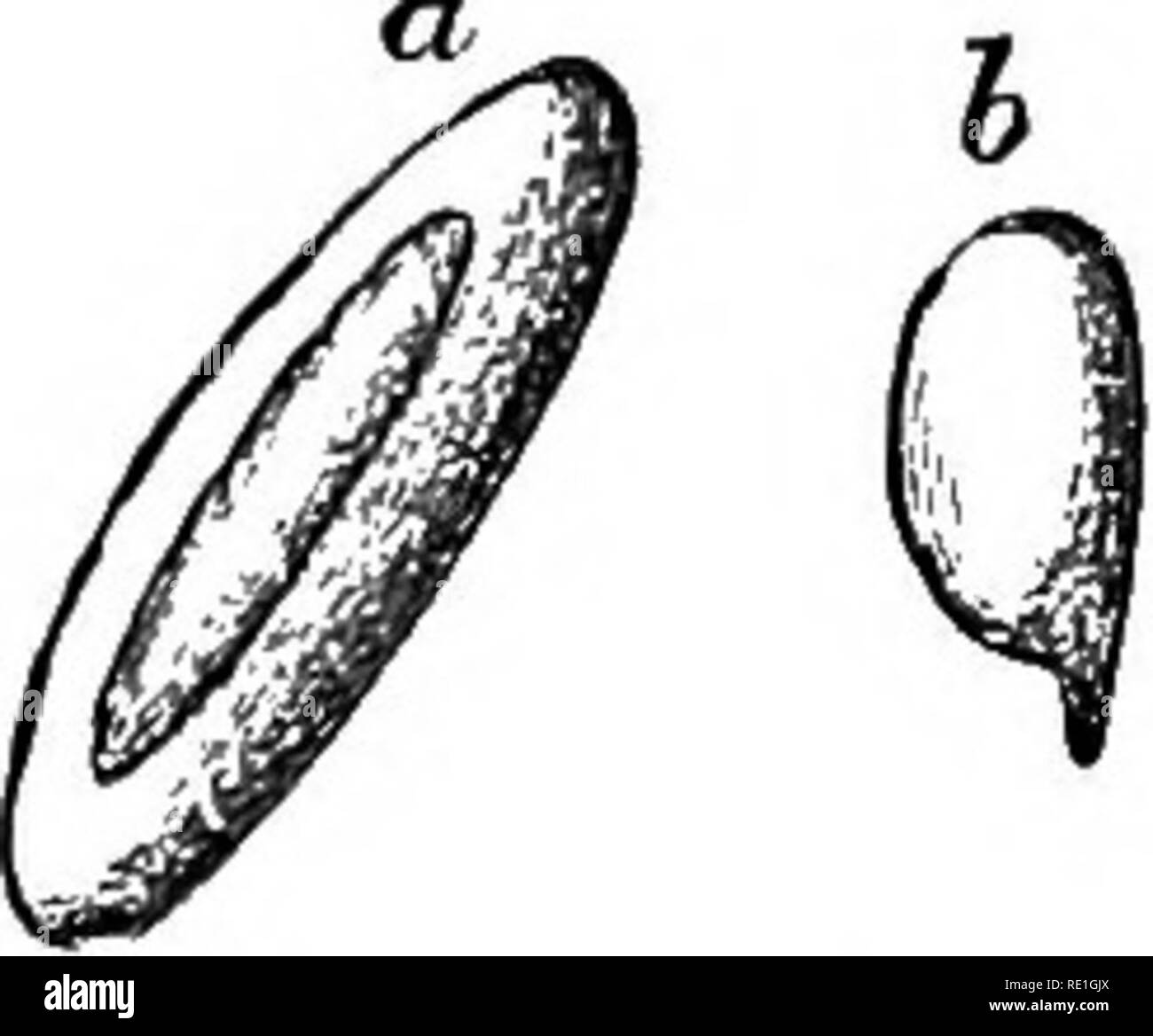. Fungi; their nature, influence, and uses;. Fungi. 122 FUNGI. tions which the form and colour of the spores undergo in dif- ferent species, as this has already been alluded to. The spores. ^(h m Via. 46*.—(a) Spore of GompMdiua Fig. 47.—Spores of (a) Pohjxiarv.t casing ; viscidus; (6) spuro of Coprinus micaceus. {b) Boletus j^arasiticus ; (c) Hydnv/m, in the Polyporei, Hydnei, &c., are less variable, of a similar character, as in all the Symenomycetes, except perhaps the Tremellini. When an Agaric is mature, if the stem is cut off close to the gills, and the pileus inverted, -with the gil

Image details
Contributor:
The Book Worm / Alamy Stock PhotoImage ID:
RE1GJXFile size:
7.2 MB (150.4 KB Compressed download)Releases:
Model - no | Property - noDo I need a release?Dimensions:
1736 x 1440 px | 29.4 x 24.4 cm | 11.6 x 9.6 inches | 150dpiMore information:
This image is a public domain image, which means either that copyright has expired in the image or the copyright holder has waived their copyright. Alamy charges you a fee for access to the high resolution copy of the image.
This image could have imperfections as it’s either historical or reportage.
. Fungi; their nature, influence, and uses;. Fungi. 122 FUNGI. tions which the form and colour of the spores undergo in dif- ferent species, as this has already been alluded to. The spores. ^(h m Via. 46*.—(a) Spore of GompMdiua Fig. 47.—Spores of (a) Pohjxiarv.t casing ; viscidus; (6) spuro of Coprinus micaceus. {b) Boletus j^arasiticus ; (c) Hydnv/m, in the Polyporei, Hydnei, &c., are less variable, of a similar character, as in all the Symenomycetes, except perhaps the Tremellini. When an Agaric is mature, if the stem is cut off close to the gills, and the pileus inverted, -with the gills downwards on a sheet of black paper (one of the pale-spored species is best for this purpose), and left for a few hours, or all night, in that position, the paper will be found imprinted in the morning with a likeness of the under side of the pileus with its radiating gills, the spores having been thrown down upon the paper in such profusion, from the hymenium, and in greater numbers from the opposed surfaces of the gills. This little experiment will be instructive in two or three points. It will illustrate the facility with which the spores are disseminated, the immense number in which they are produced, and the adaptability of the gill structure to the economy of space, and the development of the largest number of basidiospores from a given surface. The tubes or pores in Polyporei, the spines in Hydnei, are modifica- tions of the same principles, producing a like result. In the Gasteromyceles the spores are produced in many cases, probably in most, if not all, at the tips of sporophores ; but the hymenium, instead of being exposed, as in the Hymenomycetes, is enclosed within an outer peridium or sac, which is sometimes double. The majority of these spores are globose in form, some of them extremely minute, variously coloured, often dark, nearly black, and either externally smooth or echinulate. In some genera, as Unerthenema, Padhamia, &c., a definite number of spo